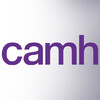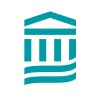
Cognitive-Behavioral Bibliotherapy for the Treatment of Obsessive Compulsive Disorder in Children...
Obsessive-Compulsive DisorderThis 16-week program examines cognitive behavioral bibliotherapy to typical therapist-directed cognitive behavior therapy for children and adolescents with Obsessive Compulsive Disorder.

Treating Refractory Obsessive Compulsive Disorder With rTMS
Obsessive Compulsive DisorderObsessive-compulsive disorder (OCD) is a severe psychiatric condition with only limited response to current first-line treatments, comprising pharmacotherapy and cognitive-behavioural therapy. Repetitive transcranial magnetic stimulation (rTMS) is a relatively new technique which has shown great promise in the treatment of refractory mood disorders, and schizophrenia, by alteration of brain activity. Previous work has demonstrated altered cortical excitability in OCD and preliminary studies have suggested that rTMS may have therapeutic potential in OCD. This pilot study will investigate the effectiveness of rTMS for treatment-refractory OCD, and establish appropriate treatment parameters. In addition, mechanisms whereby rTMS exerts its therapeutic effect will be explored using TMS to evaluate cortical inhibition and measures of cognitive biases and processing.

Duloxetine for the Treatment of Obsessive Compulsive Disorder (OCD)
Obsessive Compulsive DisorderThe purpose of this study is to assess the efficacy of Duloxetine in the treatment of obsessive compulsive disorder.

The Use of Magnetic Brain Stimulation to Treat Obsessive Compulsive Disorder, a Pilot Study
Obsessive-Compulsive DisorderThe purpose of this study is two-fold: first, to observe the effect of one session of repetitive transcranial magnetic stimulation (rTMS) on the error-prediction abilities of patients with obsessive compulsive disorder (OCD) as well as healthy individuals; and second, to observe the clinical effect of 10 sessions of rTMS in patients with OCD.

The Efficacy of TBCT Compared to ERP in the Treatment of OCD Patients, by the Assessment of Magnetic...
OBSESSIVE COMPULSIVE DISORDER (OCD)This is a sample made up of ninety-six adult individuals of both sexes to be divided into three groups: the experimental group of thirty-two patients with OCD who will be undergone Trial-Based Cognitive Therapy; the gold standard, with thirty-two people with OCD subject Exposure and Response Prevention and the control group of thirty-two healthy individuals. Interviews and therapeutic intervention occur in private practices researchers or medical schools accredited by UESPI. Experimental group: Will be eligible adults of both sexes with educational level equal to or higher education complete primary, aged between 18 and 60 years with OCD diagnosis confirmed according to criteria DSM-IV (APA, 1994). It is going to be excluded patients who had previously undergone treatment behavioral psychotherapy or cognitive-behavioral approach.

Stepped Care Cognitive Behavioral Therapy for Pediatric Obsessive Compulsive Disorder
Obsessive Compulsive DisorderStepped Care Cognitive Behavioral TherapyThe purpose of this research study is to determine how well children with OCD can be helped using therapy that requires less clinic visits. The investigators are testing a Stepped-Care Cognitive Behavioral Therapy (SC-CBT) approach in which children receive a full course of parent-led, therapist-guided treatment for OCD. The goal is to see if therapy can be done in fewer visits to the clinic. Children receiving SC-CBT will start with Step One, which includes three therapy sessions over six weeks. Those who do not get better in Step One will "STEP UP" to Step Two which involves coming in to meet with a therapist for the remaining sessions. Youth receiving SC-CBT will be compared to youth receiving standard CBT in the clinic through this study. It is expected that Stepped Care will be an acceptable, cost-effect, and feasible treatment with outcomes similar to standard CBT.

Neural Mechanisms of CBT Response in Hoarding Disorder
Obsessive Compulsive DisorderThe purpose of this research is to measure changes in brain activity with functional magnetic resonance imaging (fMRI) before and after cognitive-behavioral therapy for compulsive hoarding. Cognitive-behavioral therapy aims to help people change the thoughts and behaviors that maintain symptoms of hoarding. The investigators intend to enroll approximately 80 people with hoarding disorder and 40 people with no psychiatric disorder, between the ages of 20 and 60, for this study. The investigators believe that after treatment there will be changes in the brain activity of individuals with compulsive hoarding.

Transcranial Magnetic Stimulation (TMS) in Obsessive Compulsive Disorder (OCD): Mechanisms and Biomarkers...
Obsessive Compulsive DisorderThe purpose of this study is to test the efficacy of 1-Hz repetitive transcranial magnetic stimulation (TMS) over the pre-supplementary motor area as a treatment for obsessive compulsive disorder. Additionally, this study aims to identify the mechanisms of action of TMS and potential biomarkers and predictors of treatment response.

The Study of the Pathogenesis and Cognitive Behavioral Group Therapy in Obsessive-Compulsive Disorder...
Obsessive-Compulsive DisorderThis study intends to explore the pathogenesis of obsessive-compulsive disorder(OCD) by using biological technologies such as genetics and imaging, and to evaluate the efficacy of group cognitive behavioural therapy in OCD among the Chinese people. We also prepare to explore the synergistic effect of the pharmacological treatment combined with group cognitive behavioural therapy in OCD, and to find the biological and psychological index which can predict curative effect. This research includes case control study and randomized controlled single-blind study. At baseline, we compare the dimensions of clinical symptoms, genetics and imaging between OCD patients and healthy controls. The OCD patients are randomly assigned into pharmacological treatment, psychological treatment or pharmacological combined with psychological treatment for a 12-week treatment. After a 12-week treatment, the OCD patients will be divided into valid and invalid groups according to the results of our randomized controlled study by researchers: to our valid group, patients will continue the current treatment, and to the invalid psychological or pharmacological treatment group, patients will have a 12-week combined treatment. From the baseline, we will have a 9-month follow up for both OCD patients and healthy controls.

Attention Training for Childhood Obsessive Compulsive Disorder
Obsessive Compulsive DisorderVoluntary and involuntary attention processes are thought to play an important role in the development and maintenance of anxiety disorders including OCD. Individuals with OCD pay greater attention to threat information related to their illness and have difficulty shifting their attention from such triggers. Studies suggest that a change in attention bias may lead to a change in anxiety vulnerability. However, few studies have directly examined the causal role of attention bias in the maintenance of anxiety underlying OCD and whether modification of such biases may reduce pathological anxiety symptoms particularly in children. In this proposal, we aim to translate basic findings from research on cognitive biases in anxiety into a novel computerized intervention for child Obsessive Compulsive Disorder (OCD). The treatment is designed to target a basic cognitive vulnerability in OCD, namely the selective processing of threatening OCD-related information. 52 children with OCD will be randomly assigned to either a 12-session attention modification program (AMP) or an attention control condition (ACC). Clinical assessment of symptom severity along with a brief neurocognitive battery will be conducted before and after treatment. We hypothesize that children in the AMP group at end of treatment will show (1) decreased attention bias to OCD-related triggers using an independent measure of attention bias to assess change and (b) reduced OCD severity. This study is an initial step towards demonstrating the feasibility and efficacy of a novel computerized attention training program for OCD that ultimately may prove to be a highly transportable and accessible intervention for this childhood psychiatric disorder. Furthermore, the project will also examine neurocognitive performance before and after attention training to elucidate possible predictors and mechanisms of treatment response.
